The Formula 1 race series was established in 1950, but similar car races were held already before World War II, as car racing is practically the same age as the car itself.
Then, between the two wars, the race series was called the Grand Prix and in 1936 the 13th race of the given year was held in Népliget, Budapest. Although the race was official, it did not count towards the championship. A Grand Prix was held for more than twenty a year, but much fewer mattered in the championship, with only four in 1936, the winner was choosen based on the results of the Grand Prix of Monaco, Switzerland, Germany and Italy, who in that year was Auto Union rider Bernd Rosemeyer, who won three of the four major races.
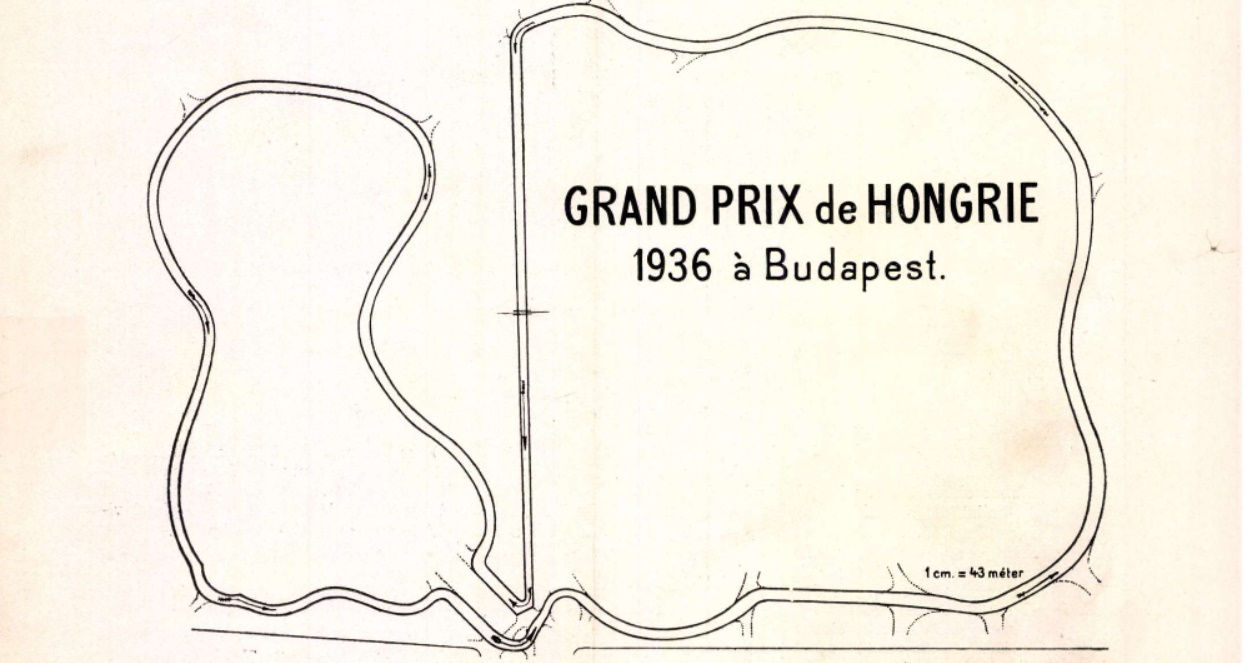
Drawing of the track in Népliget from the March 1936 issue of Az Autó
The other Grand Prix could be attended by anyone who wanted, if they had the right car. The winner of the Budapest competition received a cash prize of ten thousand Hungarian pengő. The second could claim 6,000, the third 3,000, the fourth 2,000, and the fifth 1,000 pengő.
The race in Budapest was organized by KMAC (Királyi Magyar Automobil Club), ie the Royal Hungarian Automobile Club, with the help of the most talented Hungarian car racer of the age, László Hartmann, who was the semi-official driver of Maserati at that time.
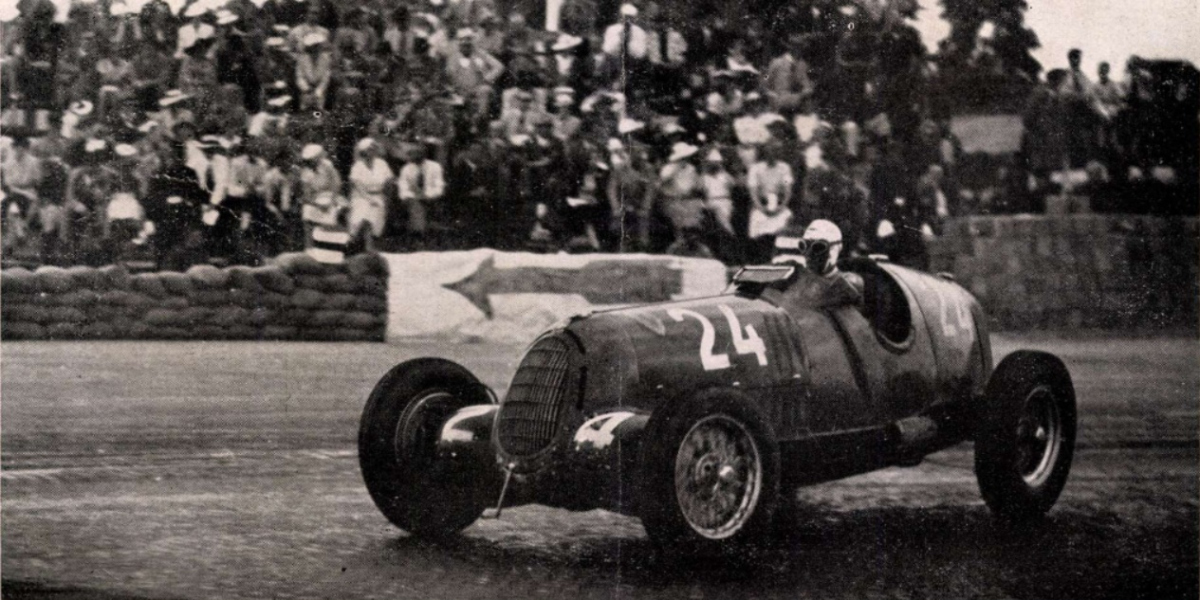
The later winner, Nuvolari in the race (Az Autó, June 1936)
The nearly 5-kilometer-long course was established in Népliget, the course practically meandered through the trees, which was described in the 13 June 1936 issue of the Ujság as follows:
“This five thousand meters is not so much a circle as more like an eight. It has a 720 meter straight and 22 turns. Four of the turns are very sharp, called hairpin bends. In the middle of the 720-meter straight line there will be the start and the finish of the race. According to the international conditions, it is not specified what cylinder capacity the participating vehicles should have.
Because the race distance is 250 kilometers, each competitor must go around the course fifty times. That alone is not enough to win. The rules stipulate that only a competitor who completes the required fifty laps in a maximum of three hours can be considered a winner and claim a prize. ”
The competition took place from 18 to 21 June. Under the rules of 1936, the size of the car’s engine was not limited, only the maximum weight of the vehicle, which was set at 750 kg. The cool big constructors, Auto Union, Alfa Romeo, and Mercedes, built monsters of 3-4,000cc, which could have up to 16-cylinder, 500-horsepower engines.
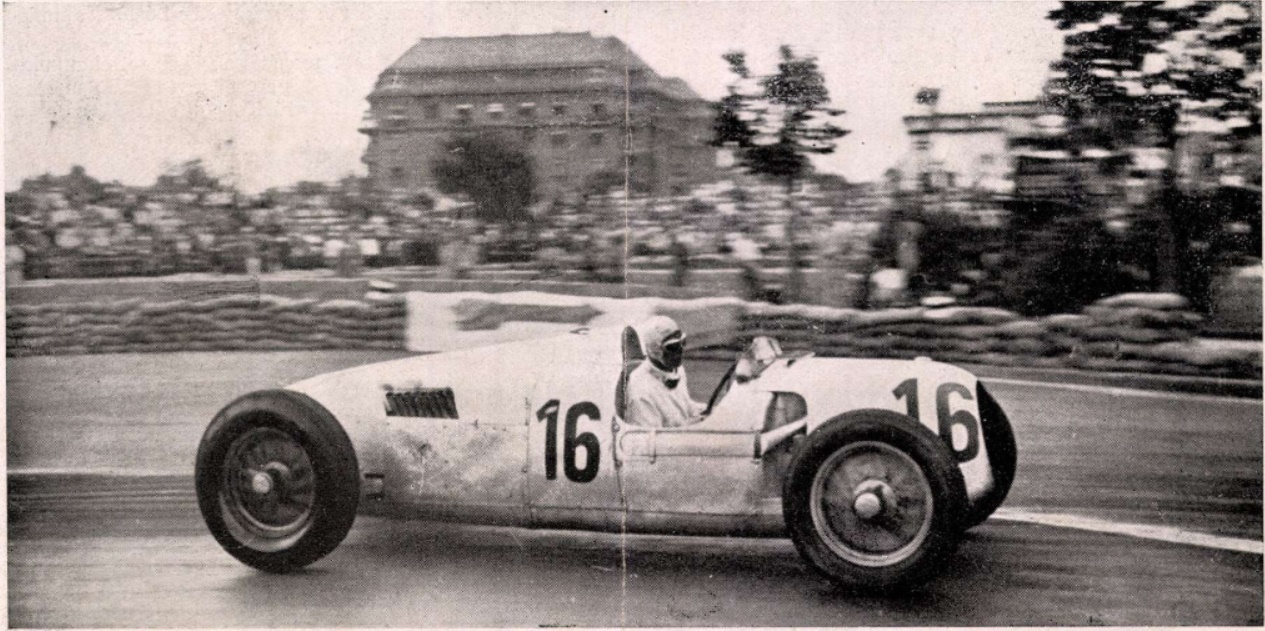
Bernd Rosemeyer in the Auto Union race car at the Népliget race (Photo: Az Autó, June 1936)
The trainings started as early as 18 June , the race was on 21 June, with a total of 11 competitors starting, including Hartmann. The probable winners were Mercedes and Auto Union, who did their best to succeed, but in the end, the victory was won by the Italian Tazio Giorgio Nuvolari, who drove an Alfa Romeo car, in the colors of the Scuderia Ferrari team. Hartmann, who started last with a 1.5-liter, national-colored Maserati against cars of 3 liters or larger, was last, in 7th place, but finished the race.
In Népliget, an estimated 90,000 people watched the race, including the great motorsport fan Miklós Horthy. In advance, the standing ticket cost 1.5 pengő, on the spot 2 pengő. There, at the time, tickets could be bought from ticket sellers who had previously bought tickets in large numbers, for an agreement with the dealer, for 1.5 pengő and they had sold them for 2 pengő to visitors on site. Everyone was prepared for a big deal and it was calculated that if successful, the competition would pay for the organizing costs of 140,000 pengő.
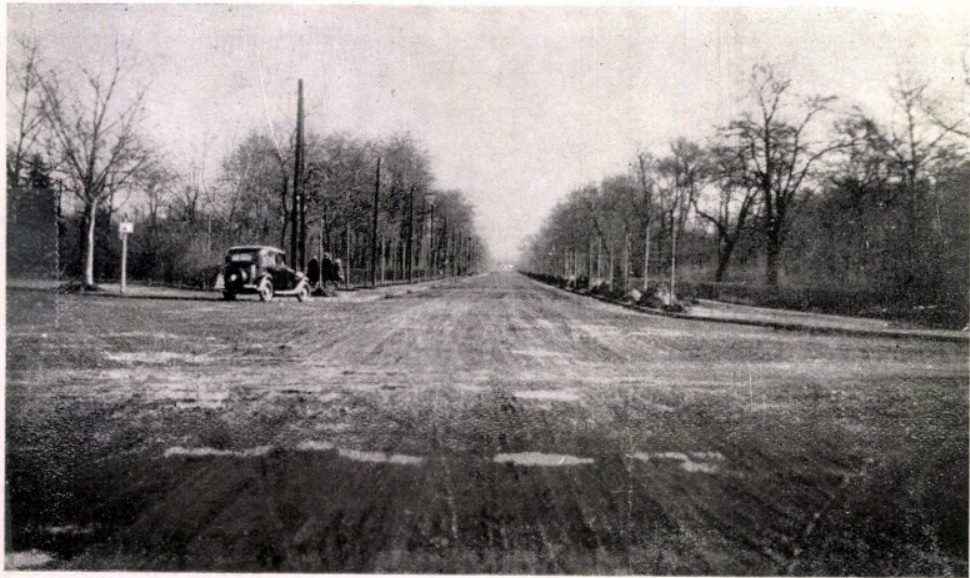
The long straight in Népliget in the February 1936 issue of Az Autó
The race was a huge success as a sporting event, foreign newspapers also described it as an exciting, good race, highlighting that no major accidents have occurred. Commercially, however, the Budapest Grand Prix was a disaster. 98,000 tickets were printed for the competition, the number of spectators was estimated to be 60,000 , or as high as 92,000, but the KMAC box office only got the price of 30,000 tickets, just over 40,000 pengő, and the loss was about 100,000 pengő. Ticket sellers signaled to the ticket vendors that they had a lot of tickets left.
The police also launched an investigation into forgery because there were suspicious tickets, the authority also had tickets with the inscription differing and some with the same serial number on it. At the beginning of the investigation, it was suspected that as many as 420 out of 500 tickets could have been forged. However, the investigation found that all the tickets were original, the tickets were made with different clichés in the printing house, while the bookmaker in Lágymányos, where the triangular tickets were cut and numbered, was not actually prepared for the task - the work took 8 days. - and the cut was uneven, and manual numbering was also mistaken many times. They also went after the paper of the tickets, but no one bought the type of paper they could not account for, so the suspicion of forgery was dispelled.
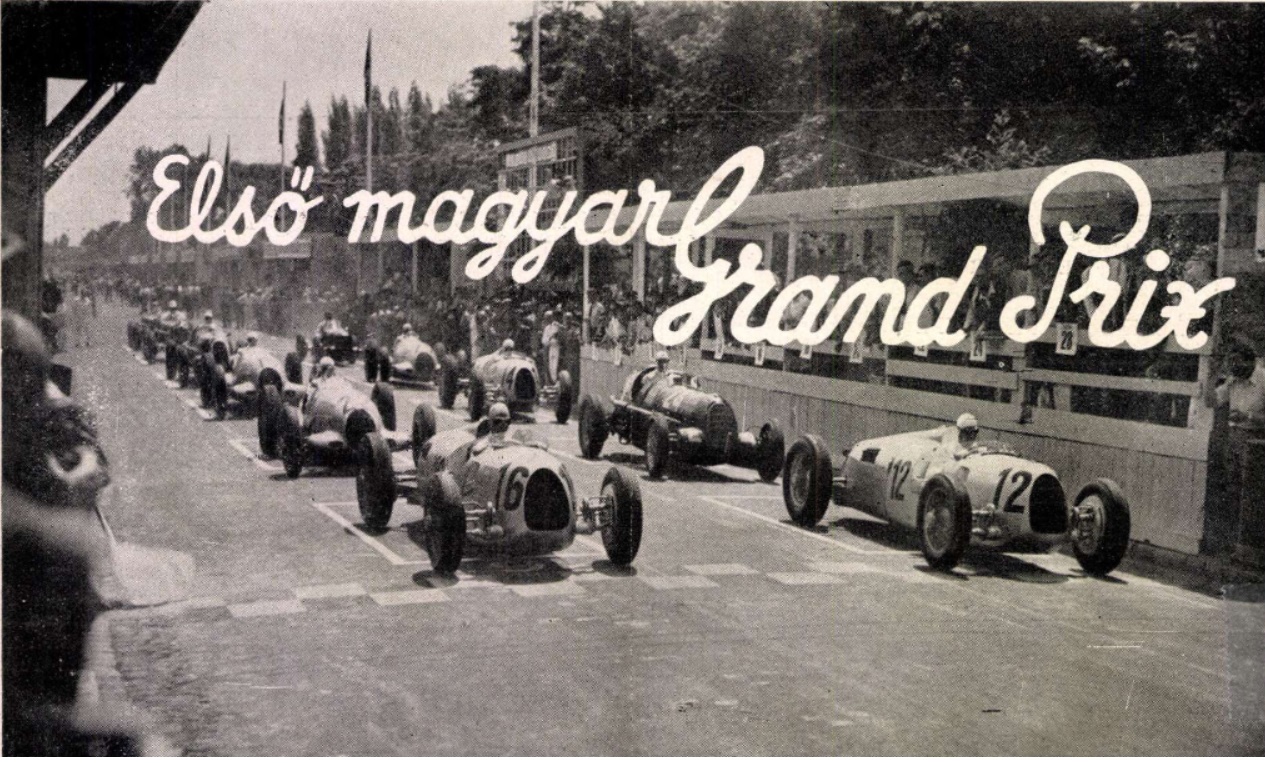
Start of the race (Az Autó, June 1936)
Police eventually found that only 30,000 tickets were actually sold, the other 50-60,000 spectators were simply able to get to the event without a ticket.
Although in 1936, after the race, everyone thought that the Grand Prix in Budapest would continue in 1937, it still took 50 years for one to be held in Hungary.
Cover photo: The start of the race (Az Autó, June 1936)

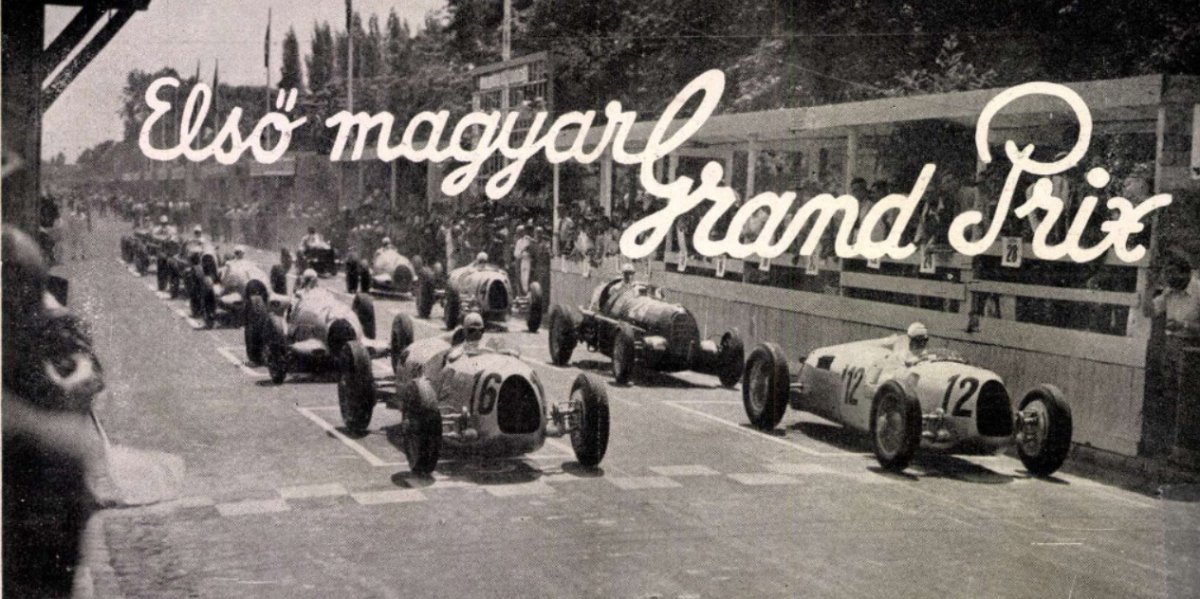


































Hozzászólások
Log in or register to comment!
Login Registration